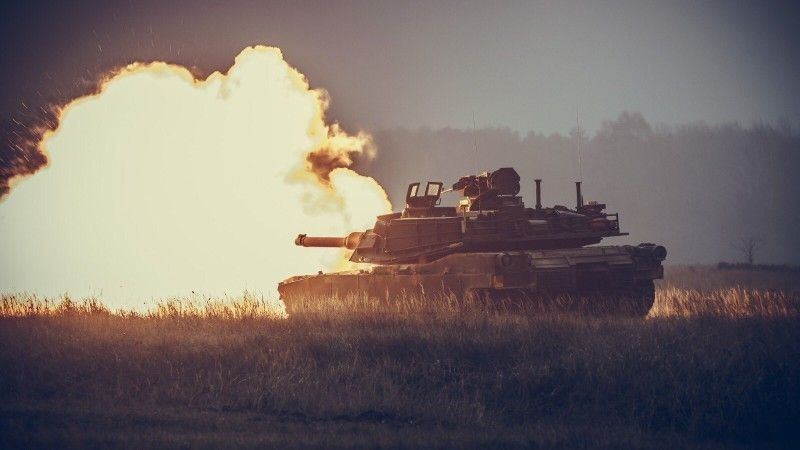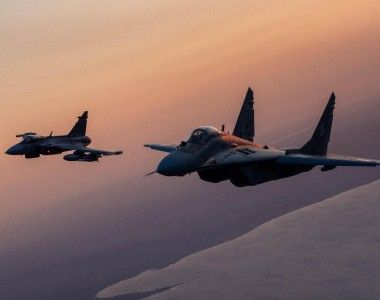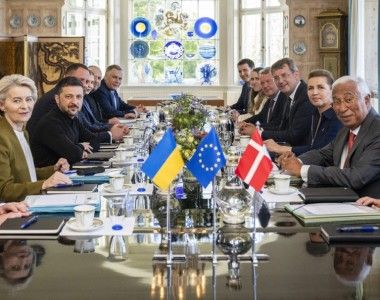A Record Budget of the Polish Ministry of Defence. And Billions for Abrams outside it [COMMENTARY]

Photo. St. Szer. Sławomir Kozioł/18 Mechanized Division
The Ministry of Finances has published the 2023 budgetary bill. The defence expenditure is to be as high as PLN 113 bn. (more than. USD 27 billion / EUR 25 billion), translating into 3.0% of next year’s planned GDP. Apart from that amount, another 4.8 bn. zlotys would be allocated to the procurement of the Abrams MBT.
According to a release issued by the Ministry of Finances, the defence spending in 2024 is to be contained in an amount of PLN 113.349 bn. which translates into 3.0% of next year's planned GDP. Compared to last year (97.445 bn.), this is a 16.3% increase.
Most of the money, 49.3 bn. zlotys would be allocated to capital expenses, including procurement of the new equipment and armament, and construction investments.
In that way, the share of capital expenditure would constitute 43.5% of the whole Polish defence budget. It is the second year in a row when a 20% share of capital expenditure is exceeded in defence spending, as required by the Act on Homeland Defence (41.2% for 2023). According to the Act on Homeland Defence, the following elements are a part of the defence expenditure plan:
- PLN 112.733 bn. in the “National defence” part of the budget;
- PLN 615.445 million - in Section 752, National defence in other sections of the state budget Ad.
That money would be allocated to research and specific purpose projects in defence, the Non-military Defence Preparation Programme, activities of the common prosecutor's office for military cases, ESA contributions, and tasks tied to military qualification processes. Meanwhile, among the funds in the "National Defence" section:
- 49.164 bn. zlotys are planned to cover the capital expenditure (40.123 bn. zlotys in 2023, 22.5% increase);
- PLN 27.738 bn. – Personnel expenditures - salary for the professional soldiers and officers, and cash consideration related to remuneration, as well as remuneration for civil personnel and teachers, along with related expenditure (in 2023 the equivalent amount was PLN 18.705 bn., that's a 20.3% increase);
- PLN 19.782 bn - expenditure and spending to cover overhaul, healthcare, telecommunications, and remaining services, and to cover procurement of materials, equipment, hardware, armament, energy, and food supplies (in 2023 the equivalent amount was PLN 19.475 bn., that's a 1.6% increase);
- PLN 11.114 bn – for retirement pay and benefits for former officers and professional soldiers (in 2023 the equivalent amount was PLN 9.501 bn., which is a 17% increase);
- 2.011 bn. zlotys are planned to cover the remainder, ongoing expenditure (1.683 bn. zlotys in 2023, 19.5% increase);
- 4.504 bn. zlotys are planned to cover liability for natural persons (4.023 bn. zlotys in 2023, 19.6% increase);
- 4.421 bn. zlotys are planned to cover the tasks tied to national defence (4.031 bn. zlotys in 2023, 9.7% increase);
Furthermore, extending beyond the amount of PLN 113.349 bn., a special purpose reserve was secured to implement the resolution issued by the Council of Ministers about a multi-year "Equipping the Armed Forces of the Republic of Poland with main battle tanks" programme and to create conditions for the implementation of that programme - for PLN 4.8 bn. These assets would become a part of the Armed Forces Support Fund.
In practical terms, this refers to the expenditure needed to finance the process through which the 18th Mechanized Division would receive the M1 Abrams main battle tanks. The said process is the topic of the Resolution of the Council of Ministers adopted back in 2021. The budget allocated to defence alone (including the special purpose reserve) would be an equivalent of 3.1% of Poland's GDP.
Meanwhile, in total, the Polish defence expenditure may be as high as PLN 158 bn. - PLN 40 bn. more than the planned budgetary means. The amount above was mentioned by PM Mateusz Morawiecki when the budgetary bill was presented. One should expect that the amount of PLN 40 bn. would be financed with the use of the Armed Forces Support Fund, and used to procure armament and equipment in collaboration with South Korea. The above refers, among other pieces, to K2/K2PL main battle tanks, K9A1/K9PL howitzers, K239 Chunmoo/Homar-K MLRS systems, and FA-50PL/FA-50 light combat aircraft.
Here, it is worth to add a small comment. The next year's budget of the Polish Ministry of Defence is the second one in a row that assumes defence expenditure at the level of 3% of GDP. Similarly, as in 2023, Poland would continue its major defence expenditure efforts via the Armed Forces Support Fund. This means the total amount associated with defence expenditure may be as high as PLN 158 bn. (In 2023 this is compliant with NATO data - PLN 134 bn., 74-75 bn. zlotys for the year 2022).
In 2024, as in 2023, the total defence expenditure would be close to 4% of GDP (4.2 and 3.9% respectively). Meanwhile, in 2022 we were dealing with expenditure equivalent to 2.4-2.7%, depending on methodology. Back then, the first contracts were signed on procurement of the first lots of Abrams MBTs, K2s, K9s, Chunmoos, or the "Little Narew", the Gladius UAVs, AW149 helicopters, and so on.
It is worth answering the question: What is the underlying reason for the difference in the defence and modernization expenditure levels? The latter are to be financed by the Armed Forces Support Fund.
It was not until 2023, that the high-value contracts would be signed and financed, both with the foreign bidders (AH-64E Apache, M142 HIMARS/Homar-A, second phase of the Wisła programme), as well as the Polish industry (Borsuk IFV, Rosomak APC with a ZSSW-30 turret system, maybe a heavy IFV), and the projects done as a collaborative effort (K2PL, Narew system).
After financing starts regarding those agreements, the spending would exceed significantly the 2022 levels. One may even define this as a "wartime" budget close to 3% of GDP (or even 4%, if the Armed Forces Support Fund is taken into the equation). This accumulation has been caused by the full-scale war in Ukraine on one hand, and the growing levels of threat, and by many decades of backlog that need to be covered now.
A separate issue refers to maintaining the newly commissioned platforms throughout their lifecycles - at this scale, the proportion between procurement and maintenance of the introduced platforms may change significantly, over the upcoming 5-10 years. Agreements of such scale need to create a contribution to the development of domestic potential; the LCC kept domestically, within the Polish industry, would be lower, while local maintenance is simply more practical. Whether that happens shall be covered by a separate analysis.



